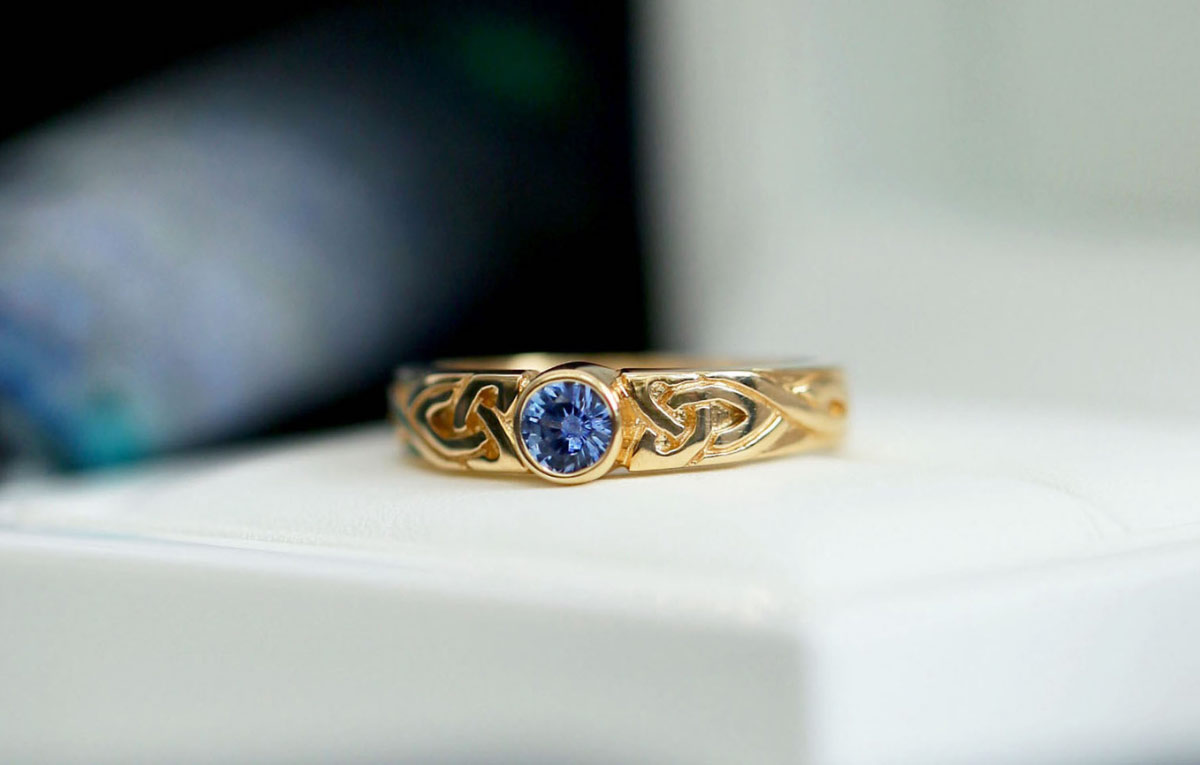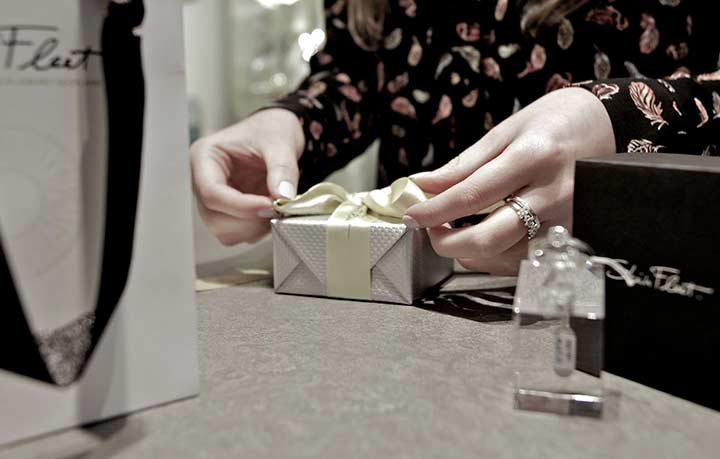
What is hallmarking & why is it important?
A hallmark is your guarantee of quality for the jewellery you buy, and can only be applied by an independent Assay Office, of which there are four in the UK.
The hallmark consists of three symbols: the Maker’s Mark (also known as the Sponsor's Mark), the Metal Fineness Mark and the Assay Office Mark.
Maker's Mark
All of Sheila’s jewellery, except her Scottish Gold designs, carry the maker’s mark ‘SD’, granted to Sheila by the Edinburgh Assay Office under her maiden name, Sheila Dearness.
A separate maker's mark known as the Sheila Fleet Scottish Gold Mark is used exclusively on Sheila's Scottish Gold jewellery. This mark uses the ‘SF’ initials from the Sheila Fleet Jewellery logo and guarantees that all gold within the item is Scottish Gold from the Cononish Gold Mine. Find out more about exclusive Scottish Gold.
Metal Fineness Mark
The metal fineness mark indicates the type of metal and its purity. All jewellery made in precious metals over a certain weight must be hallmarked by law. If your piece of jewellery is made in gold, platinum or palladium, it will most likely carry a hallmark as the threshold weights for hallmarking for these metals are very low (1g or less). Silver jewellery weighing 7.78g or less, however, is exempt from hallmarking. Please refer to our Guide to Precious Metals for more information.

The shape of the metal fineness mark defines the type of metal, and the number within the shape guarantees the precious metal content is at least the fineness indicated. The British Hallmarking Council's Guarantee & Dealer Notice lists these marks in detail.
Assay Office Mark
Sheila sends all jewellery requiring a hallmark to the Edinburgh Assay Office who use a distinctive castle emblem as their mark.
![]()
If you have any queries about your hallmark or the metal used in your Sheila Fleet jewellery please get in touch. The British Hallmarking Council's Guarantee & Dealer Notice is also a useful resource.






























